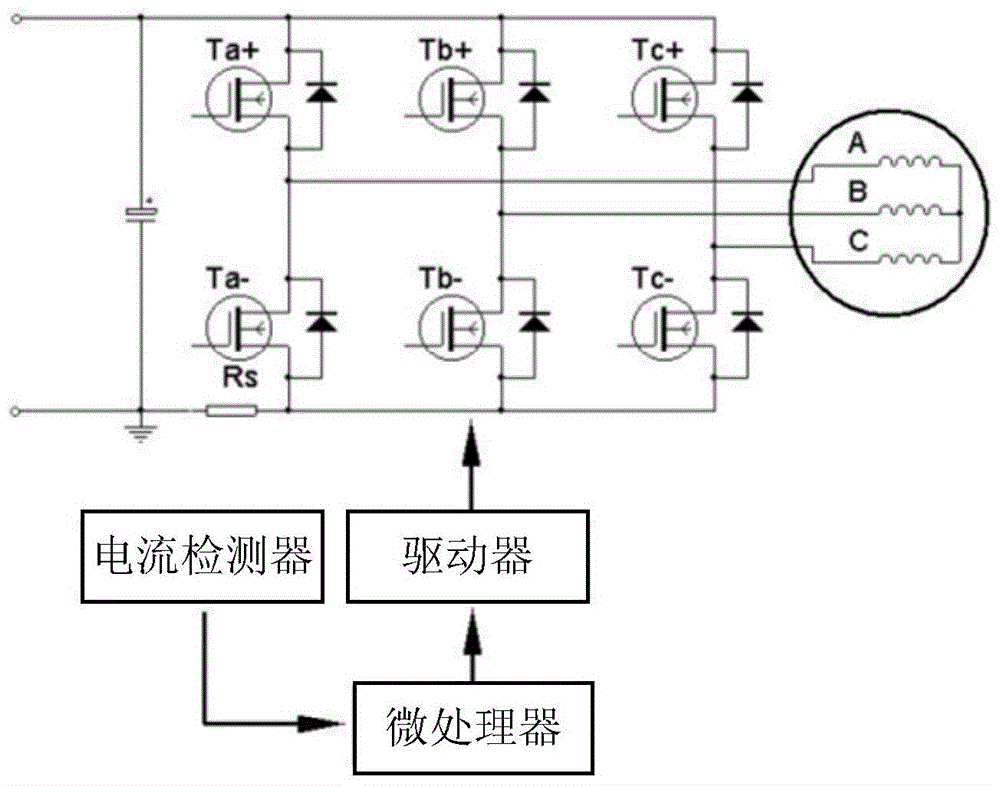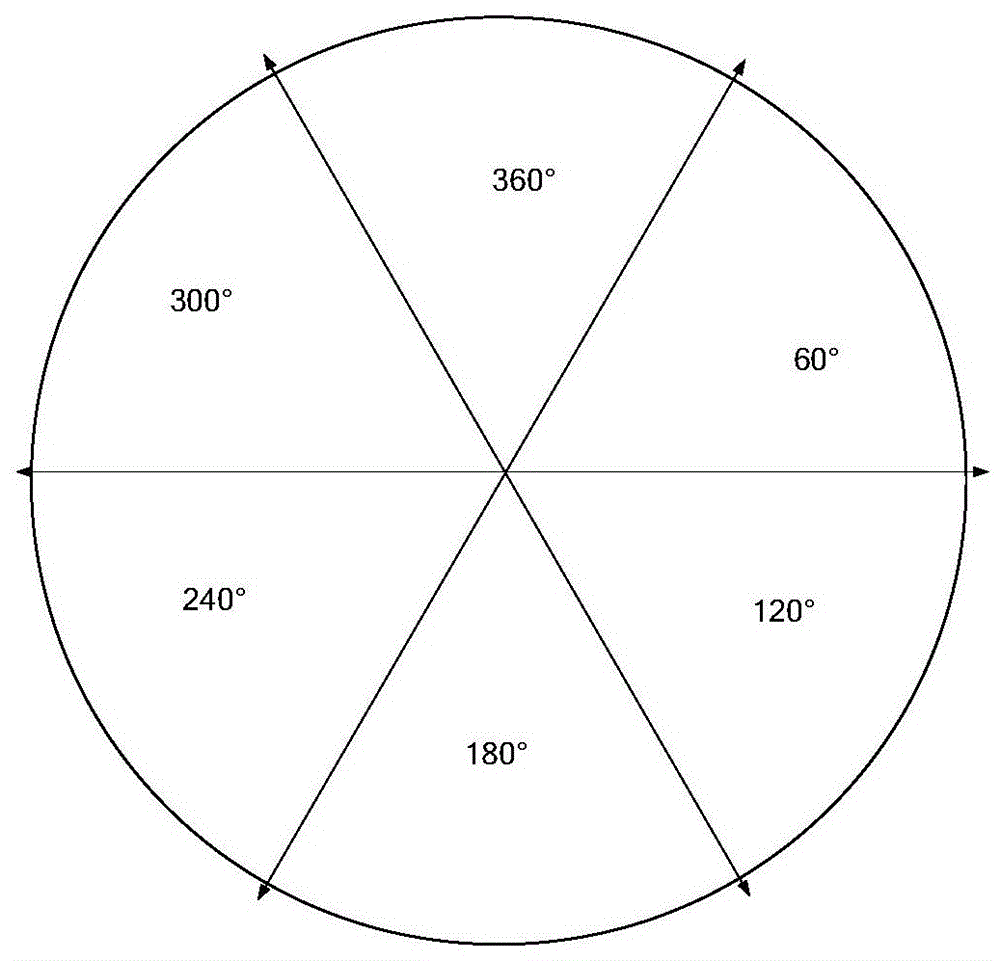Brushless DC Motor and Its Rotor Position Positioning Method
A technology of brush DC motor and rotor position, applied in the direction of electronic commutation motor control, electrical components, control system, etc., can solve the problems of rotor inaccessibility, noise, limited application range, etc., and achieve the effect of strong starting ability
- Summary
- Abstract
- Description
- Claims
- Application Information
AI Technical Summary
Problems solved by technology
Method used
Image
Examples
Embodiment approach
[0050] As an implementation mode, we choose all twelve kinds of pulses, and the three variables are:
[0051] DVU=(CP5+CP8+CP12)–(CP6+CP7+CP11);
[0052] DVV=(CP4+CP10+CP11)–(CP3+CP9+CP12);
[0053] DVW=(CP1+CP7+CP9)–(CP2+CP8+CP10);
[0054] Wherein, the variable factors CP1-P12 are the peak values of the DC bus current generated by the pulses Pulse1-Pulse12 respectively, and DVU, DVV and DVW are three variables, which are virtual variables used for judgment. The selection principle of these variables is that each dummy variable represents a motor winding axis, which differs by 120 degrees from each other, and the positive and negative pulse peak values are subtracted. When the winding axis coincides with the rotor axis, the difference between positive and negative pulse peak values is the largest, and the absolute value of the virtual judgment variable is also the largest. The other DC bus current peak variables are distributed symmetrically.
[0055] As another imp...
PUM
 Login to View More
Login to View More Abstract
Description
Claims
Application Information
 Login to View More
Login to View More - R&D
- Intellectual Property
- Life Sciences
- Materials
- Tech Scout
- Unparalleled Data Quality
- Higher Quality Content
- 60% Fewer Hallucinations
Browse by: Latest US Patents, China's latest patents, Technical Efficacy Thesaurus, Application Domain, Technology Topic, Popular Technical Reports.
© 2025 PatSnap. All rights reserved.Legal|Privacy policy|Modern Slavery Act Transparency Statement|Sitemap|About US| Contact US: help@patsnap.com



